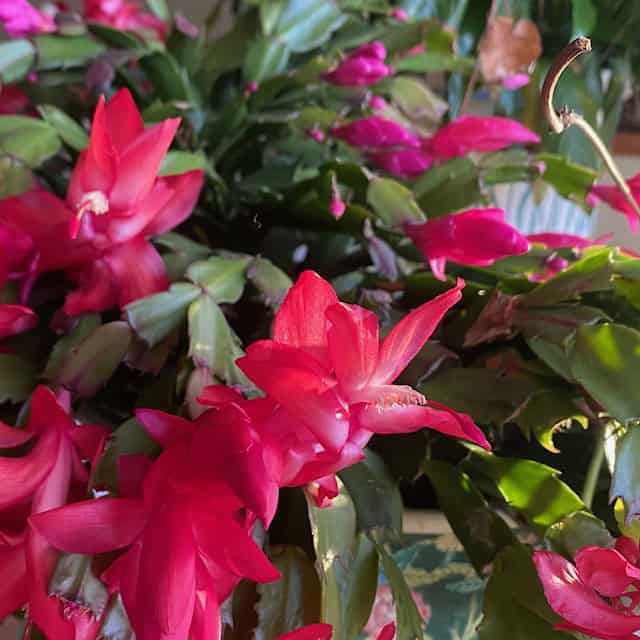The Christmas cactus is a great, low maintenance plant. If you are lucky, you will get a big payoff of beautiful flowers around Christmas. Read on to find out more.
Physical Appearance
This plant has several unique characteristics:
First, it has deep green smooth leaves with scalloped edges. Don’t be fooled. The term leaves is used loosely. Remember this is a cactus. Consequently, the leaves are not like you would find on a typical deciduous plant.
Second, the stems are a series of leaf-like pads joined together. These leaf-like pads are reticent of a succulent. Think of the stems as a series of segmented pads joined together.
Third, if treated correctly, a beautiful bloom will emerge from the end of each stem around Christmas time, hence the name, Christmas cactus.
Finally, the blooms are usually pink, magenta, red, or orange. They are tubular and double layered.
Interesting Facts about Christmas Cactus
In the wild, these plants are an epiphyte. Epiphytes are plants that grow on the surface of other plants. They get all of their nutrients to grow from the air, moisture, and debris around them.
Christmas cacti are phototrophic. This means that they require short days and longer nights for a specified amount of time in order to flower. By shorter days, I mean less than 12 hours of light. Numerous resources agree that the shorter days need to occur for at least 6 weeks to stimulate flower bud production.
This cactus originated from Brazil. It’s a great plant if you have pets, because it is not toxic to either cats or dogs.
Don’t worry about repotting frequently because this cactus doesn’t mind being a little root bound.
It also likes some water, but not too much.
If you research this plant on the internet, some of the suggested care instructions are rather complicated. I put mine outside in the spring, just after the last frost. It sits under the eve, so it doesn’t get much direct sun. My plant stays outside until just before the first frost. I’ve had beautiful blooms the last few years. And this one was propagated from a cutting a few years ago. My house is cold in the winter, around 60’ Fahrenheit, which the plant loves. I’m located in Northern Virginia. We have four distinct seasons, and usually hot summers.

